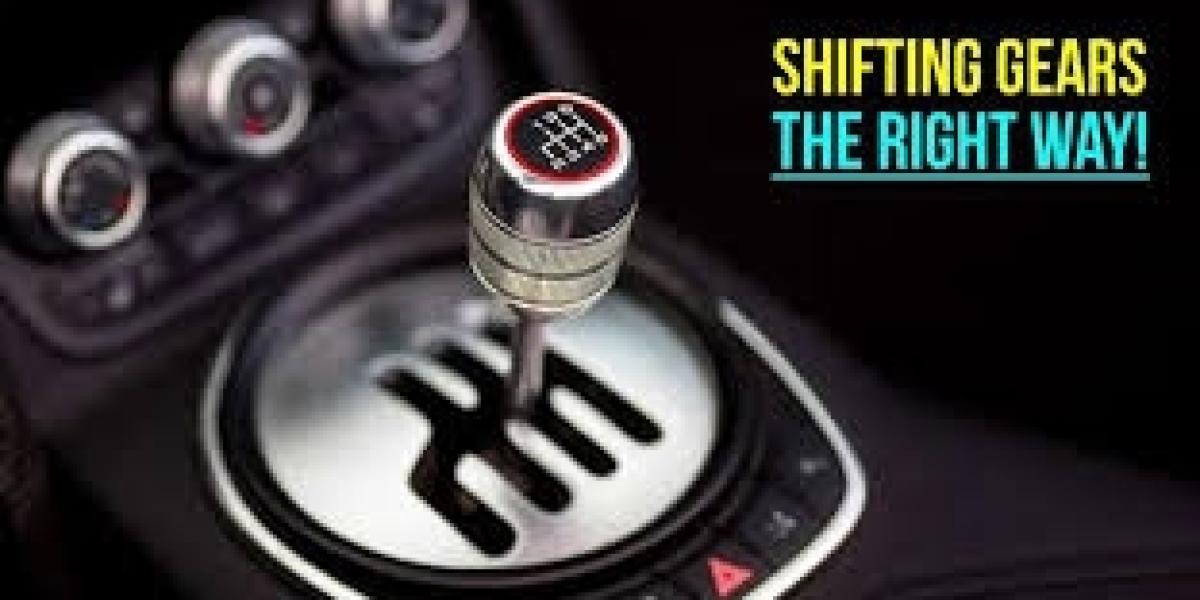Driving a manual-transmission car may be rather enjoyable because it provides more control, better fuel economy, and a stronger link between driver and car. However, in contrast to automatics, they require a more engaged driving style. It's easy to fall into bad habits that might affect your car's performance or even your safety, whether you're new to driving a manual or have been doing so for years.
Let's take a look at the common mistakes that manual transmission automobile drivers make and how to avoid them.
Resting your hand on the gear stick
Though not recommended, it may appear normal to leave your hand on the gear stick after changing. The selector fork within the transmission connects to the gear lever. Constant pressure, even mild pressure, can cause early degeneration of inner elements.
Rather, try changing gears and then returning your hand to the steering wheel. Not only is this safer because you have better control over the vehicle, but it also benefits the gearbox.
Riding the clutch unnecessarily
This is probably the most common issue for manual drivers, particularly in stop-and-go traffic. Riding the clutch requires maintaining your foot partially on the clutch pedal to avoid complete engagement or disengagement. Eventually, this creates excessive wear and clutch slippage.
When changing gears, always try to fully engage the clutch; when not shifting, remove your foot completely from the pedal. Stuck at the traffic lights? To avoid unnecessary strain, change to neutral and take your foot off the clutch.
Launching the car incorrectly
Starting or effectively starting the car from a stop can be difficult for rookie drivers. One big problem is revving the engine too high and dumping the clutch too quickly, which results in jerky starts and increased clutch and drivetrain wear.
Instead, focus on clutch release and smooth throttle control. With time, you'll develop the muscle memory to start the vehicle without excessive revving or jarring clutch strokes. When starting on an uphill or parking, this is critical.
Knowing how to safely lock the car when parked is an often-overlooked but critical component of safe manual driving. Many drivers either overuse their parking brakes or are unaware of the impact that gear selection has.
Skipping gears without proper rev-matching
When you need to slow down quickly, it may be tempting to shift from fifth to second gear, but doing so without rev-matching might scare the powertrain and overwork your engine and transmission. This abrupt change may also compromise vehicle control.
Rev matching is the process of increasing engine RPMs to fit the lower gear before clutch release. Although it appears to be a complex skill, it is actually rather simple to acquire with little effort and aids in downshifting more safely and smoothly.
Driving with the clutch partially engaged
Drivers occasionally keep partial clutch pressure while driving, either from habit or fear of stalling. This is quite hazardous, causing excessive heat and wear on the clutch plates.
There is no middle ground: your clutch is either fully engaged (pedal up) or completely disengaged (pedal down). Holding the clutch in the middle of a turn or slowing down affects your vehicle.
Not securing the car correctly when parking
One fairly common mistake is failing to properly lock a manual gearbox vehicle when parked. Many drivers just leave the vehicle in neutral and apply the handbrake. Although it may appear innocuous, especially on slopes, it greatly increases the risk of the car rolling away.
The best technique is to leave the car in gear and use the handbrake; reverse while parking uphill and use first gear when parking downhill. You can also position your wheels toward the curb for further safety.
Riding the brakes on downhill drives
Some drivers on downhill journeys frequently use the brakes to regulate their pace. Although it may be helpful for a while, this creates brake fade, which is a decrease of braking power caused by overheating. In manual automobiles, the best way to use engine brakes is to change down to a lower gear. This strategy gives you more control while slowing down the vehicle without causing the brakes to overheat.
Holding the car on a hill with the clutch
Hill starts are especially challenging in traffic. Though it quickly wears out the clutch, some drivers balance the clutch and accelerator to keep the car from moving.
Instead, apply the handbrake. On the slope, apply the brake; then, as you approach the clutch bite point and add throttle, gradually release it. This strategy not only saves your clutch but it also prevents rollback.
Ignoring warning signs of clutch wear
Many manual drivers overlook the early signs of a worn-out clutch. These include a burning odor after driving, a mushy clutch pedal, and problems changing. Catching these warning signs early can help you prevent costly breakdowns and repairs.
Make it a habit to pay attention to your vehicle and address any issues as soon as possible. Routine maintenance inspections can help to keep your transmission system in good working condition.
Conclusion
Driving a manual automobile is a talent that, like all other abilities, takes time and effort to acquire. Avoiding these common mistakes can not only improve your driving experience but will also extend the life of your car's components. Whether you're driving a weekend beach road in Australia or navigating packed city streets, understanding your car's mechanics and appreciating the clutch, gearbox, and brakes can make your journey safer and more enjoyable.
If you ever have doubts about manual automobile techniques, don't be afraid to seek assistance or reread the concepts; your car and your money will thank you.






